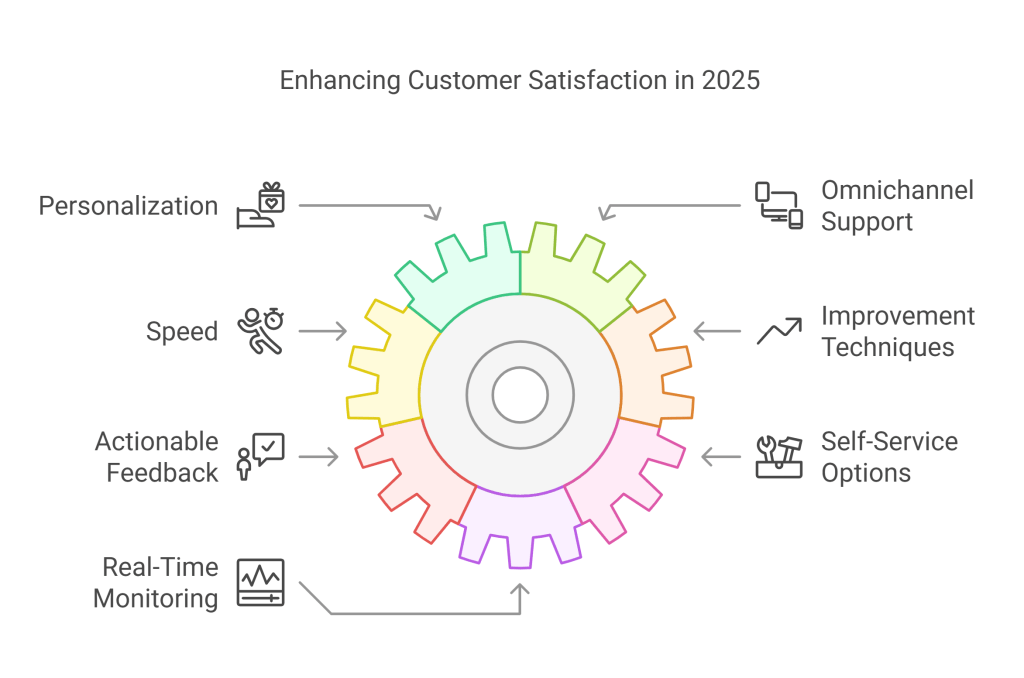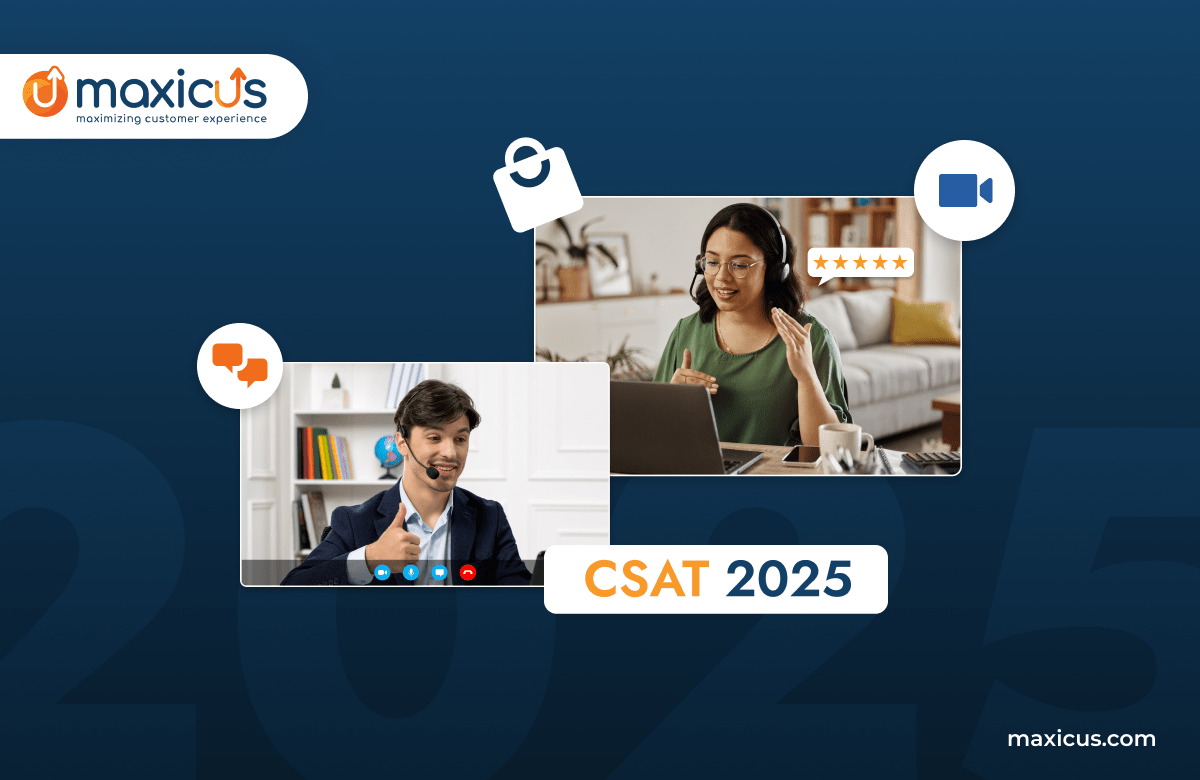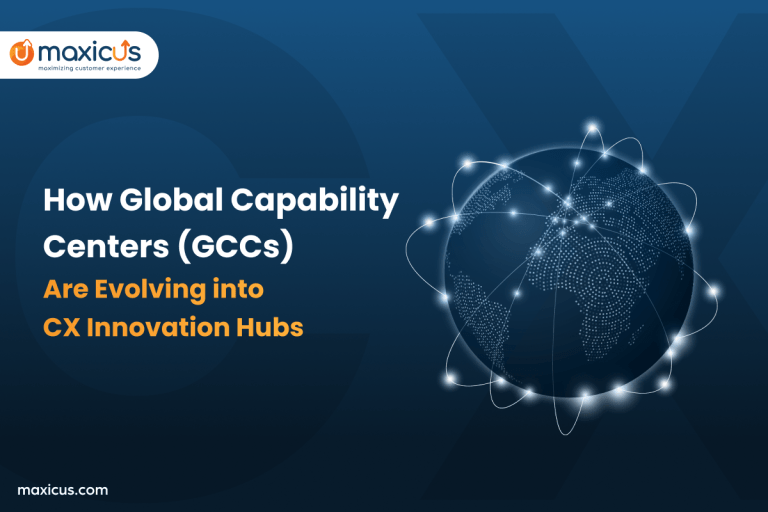How to Boost Your CSAT Score in 2025: Top Strategies and Expert Insights
As we move into 2025, customer satisfaction is set to become an even more crucial factor for businesses. Building long-lasting relationships with clients is now a key objective for companies. With changing technology and rising customer expectations, strategies for achieving high customer satisfaction are evolving. CSAT (Customer Satisfaction) metrics reflect how well a company meets customer expectations.
Boosting your CSAT score isn’t just a goal—it’s a necessity. Companies with high CSAT scores differentiate themselves by fostering loyalty and trust. Achieving a high CSAT score is no longer optional, as the rules of customer engagement have shifted. Companies must adapt. Businesses must rethink their approach to delivering exceptional experiences.
In this blog, we’ll explore cutting-edge technologies and customer-first approaches that can strengthen your brand reputation and foster lasting customer loyalty.
Table of Contents
- What is Customer Satisfaction (CSAT)?
- What is a CSAT Score?
- The Impact of Customer Satisfaction (CSAT)
- Top 6 Strategies to Boost Your CSAT Score in 2025
- How Maxicus Can Contribute to Boosting CSAT Scores
What is Customer Satisfaction (CSAT)?
Customer satisfaction measures how happy customers are with their interactions with a business, including everything from the quality of the product to the level of customer service provided.
High customer satisfaction corresponds to positive experiences with brands, while low satisfaction suggests issues or disappointments.
According to a survey by Gartner, organizations that demonstrate how customer satisfaction is linked to growth, margin, and profitability are more likely to report success in customer experience (CX).
What is a CSAT Score?
A CSAT score is a measure of how satisfied customers are with a product or service. The CSAT score is calculated by the percentage of customers who give a positive response.
CSAT (%) = (Number of Satisfied Customers / Total Respondents) × 100
The Impact of Customer Satisfaction (CSAT)
- Increased Customer Loyalty: Satisfied customers trust your brand and feel confident in your ability to meet their needs.
- Enhanced Growth and Revenue: Satisfied customers are more likely to purchase again or try other products you offer.
- Competitive Advantage: Excellent customer satisfaction gives your business a unique edge, increasing the likelihood that customers will choose your brand over competitors.
A survey by McKinsey & Company shows that companies that fail to invest in customer satisfaction risk talent attrition, customer dissatisfaction, and even loss of market share.
Top 7 Strategies to Boost Your CSAT Score in 2025

1. Offer Personalization to Enhance Customer Satisfaction (CSAT):
Personalization transforms generic interactions into meaningful experiences, making customers feel valued and understood.
Personalization leads to:
- High satisfaction
- Increased loyalty
- Repeat business
2. Deliver Omnichannel Support to Boost Customer Experience:
Customers expect a seamless transition across platforms. If a customer starts a conversation on a mobile app and then moves to a website or phone call, they expect support agents to have full context of the previous discussion. Omnichannel support meets this demand, ensuring customers don’t have to repeat themselves or restart the conversation.
3. Leverage Speed to Reduce Customer Support Time:
Customers expect proactive resolutions and efficient service.
4. Improvement techniques to have an impact on CSAT in 2025 include:
- Stronger customer relationships
- Hassle-free returns
The quicker and more convenient the experience, the higher the CSAT metrics, leading to improved customer satisfaction and higher CSAT scores.
5. Transform Customer Feedback into Actionable Improvements:
Businesses should prioritize issues based on their impact, develop specific action plans, and involve relevant teams for implementation.
Prioritization matrix:
- High Priority: Issues causing major dissatisfaction.
- Medium Priority: Suggestions that can improve the experience but aren’t critical.
- Low Priority: Minor improvements or niche requests.
Transparency about challenges builds trust and fosters collaboration, leading to improved satisfaction.
6. Enable Self-Service Options to Improve Customer Experience:
Self-service tools like FAQs, chatbots, and help centers empower customers to find solutions independently, reducing dependence on support teams. This eliminates long support queues and provides a better customer experience.
Benefits of self-service:
- Empowers customers
- Reduces frustration
- Improves efficiency for support teams
According to a survey by Gartner, nearly 50% of organizations track the financial benefits of customer experience (CX) projects, and over 80% of organizations expect to compete mainly based on CX.
7. Implement Real-Time Feedback Monitoring:
Real-time feedback collection helps businesses track customer sentiment and resolve issues faster, directly impacting CSAT scores.
Maxicus: The Key to Unlocking Higher Customer Satisfaction (CSAT) in 2025
Maxicus provides solutions that maximize customer metrics. By ensuring that every customer interaction is positive, seamless, and integrated, Maxicus helps improve CSAT in 2025.
How Maxicus Contributes to Boosting CSAT Scores:
- Efficient Workforce Management: Maxicus ensures that the right number of agents with the required skills are available.
- Omnichannel Support: Maxicus provides continuous support across multiple channels—phone, email, live chat, social media, and self-service portals.
- 24/7 Support: Maxicus offers round-the-clock customer service to reduce wait times and ensure timely assistance, directly improving satisfaction.
- Video Commerce: Maxicus bridges the gap between online shopping and in-store experiences with live video interactions, providing real-time demos and enhancing the customer experience.
Ready to Boost Your CSAT Score in 2025?
Conclusion
In conclusion, Maxicus plays a vital role in enhancing and monitoring CSAT through real-time feedback collection, advanced data analytics, and proactive issue resolution. Our comprehensive approach helps businesses track and analyze customer satisfaction, identify areas for improvement, and ensure continuous enhancement of the customer experience. By leveraging these tools, Maxicus empowers companies to boost CSAT scores and build stronger, longer-lasting customer relationships.
FAQs
How do I measure customer feedback effectively?
To measure customer feedback, follow these key steps:
- Track Key Metrics: Focus on CSAT, NPS, and CES to measure satisfaction, loyalty, and effort.
- Act on Feedback: Prioritize improvements based on feedback and address both quick wins and long-term changes.
- Close the Loop: Inform customers of the actions taken based on their feedback to build trust.
How does customer feedback impact my CSAT score in 2025?
Customer feedback directly influences satisfaction levels, helping you to:
- Build customer loyalty
- Identify areas for improvement
- Measure customer satisfaction
Key Trends to Watch for in CSAT 2025:
- Omnichannel support
- AI-driven support
- Voice of the customer
- Humanizing support
- Real-time feedback
What is Maxicus’ role in measuring and monitoring CSAT?
Maxicus contributes by:
- Customer Journey Mapping: Tracking areas of improvement and optimizing customer experiences.
- Live Feedback Monitoring: Collecting customer feedback in real-time through various channels.
- Continuous CSAT Enhancement: Monitoring CSAT, analyzing trends, and advising businesses on strategies to improve satisfaction over time.










